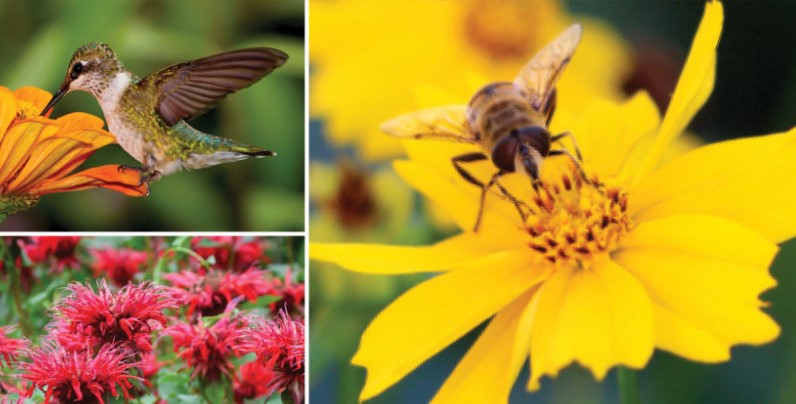Native Plant Gardening for Birds, Bees & Butterflies
Review by Claudia Larsen
Dr. Jaret Daniels’ latest book, Native Plant Gardening for Birds, Bees & Butterflies (Nature-Friendly Gardens, $22.95), draws from his experience as both an entomologist and a native plant gardener who keenly observes interactions between plants and wildlife.
Daniels, who is curator for the McGuire Center for Lepidoptera & Biodiversity at the Florida Museum of Natural History in Gainesville, has educated countless people about the decline of pollinators through numerous talks, workshops, and research and landscape projects that remind us all to do our parts in either small or large ways.
It is evident that Daniels speaks from personal experience when he describes starting a garden. He gives thorough instructions about proper site preparation, as well as evaluation of light, soil, moisture and weed elimination. He describes good general gardening techniques but also points out the need for diversity and native plants to make your yard part of the “pollinator trail” and to “establish healthier and more-sustainable spaces for wildlife, and for humans.”
Tackling hard topics
Daniels weaves in the importance of purchasing local ecotypes; avoiding cultivars and hybrids unbeneficial to insects; and steering away from plants grown with pesticides, particularly neonicotinoids. His message is clear and friendly without being preachy or “know-it-all.”
The book introduces pollinator groups and displays closeup color photographs of various insects. The book also has a handy larval-host plant list with both butterfly and caterpillar snapshots. However, it is not about insects – it is about choosing plants that attract, feed and shelter them while creating a landscape that matters.
Within its 280 pages, plant selections are organized by light levels, and quick-reference charts list each plant’s attraction to butterflies, bees and birds, while another column notes deer resistance (which I can really use!).
The book includes 110 plants – 70 wildflowers, with shrubs and trees making up the rest. Although the list was prepared for Southeastern gardeners, there are very few plants on it that are not adapted to Florida. It is hard to make a list of all the useful plants that are beneficial to wildlife. I was surprised by a few included, but the selection covers a wide range of gardening possibilities.
Gardeners wishing to add more native plants to their landscape will find the book useful. I recommend it because it covers plants and insect connections and brings home the message of pollinator decline. Its full-page flower photos are beautiful and show wonderful plant diversity. However, there are not many photos of gardens displaying plant size, structure or combinations.
Claudia Larsen is an education and planting consultant for the Foundation.

